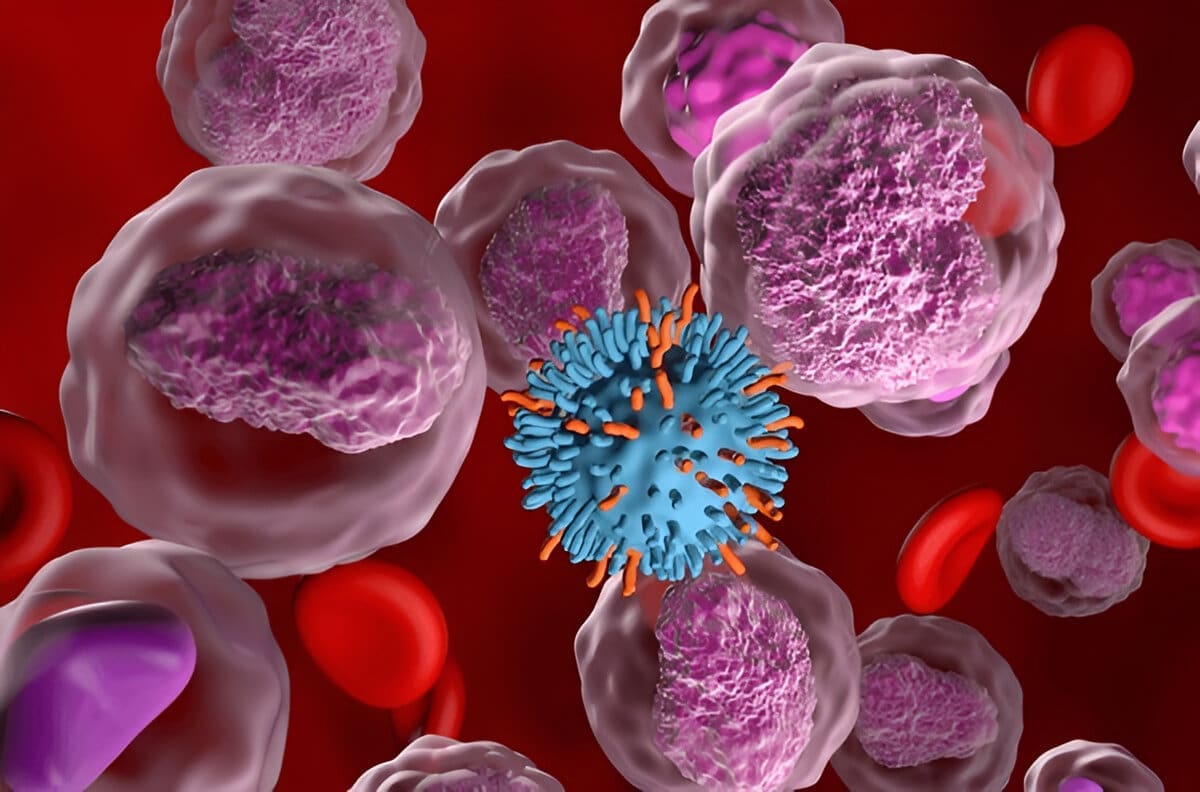Last Updated on November 26, 2025 by Bilal Hasdemir

Feeling more pain after an epidural steroid injection can worry you. At Liv Hospital, we know this can happen for a few reasons. It might be because of temporary irritation or making an old problem worse.
We are here to help you fully. In this article, we will explore why symptoms might get worse. We’ll also tell you when to get medical help, so you get the support you need.
Key Takeaways
- Epidural steroid injections can sometimes cause temporary discomfort.
- Understanding the causes of worsening symptoms is key to managing them well.
- It’s important to see a doctor if the pain doesn’t go away or gets worse.
- Liv Hospital is committed to giving you top-notch care and support.
- Our team is ready to help you figure out your treatment options.
Understanding Epidural Steroid Injections

People with certain spinal issues might find relief in epidural steroid injections. This method involves putting corticosteroids near the spinal cord. It aims to cut down on inflammation and ease pain from different spinal problems.
What Are Epidural Steroid Injections?
Epidural steroid injections are a non-surgical way to treat pain. They involve putting corticosteroids into the space around the spinal cord. This area is filled with fat and protects the spinal cord.
By putting steroids here, we can lessen inflammation around the spinal nerves. This is often where pain comes from.
The procedure is usually done under fluoroscopic guidance. This means we can place the injection exactly right. Getting it right is key to making the treatment work well and to avoiding risks.
Common Conditions Treated with Epidural Injections
Epidural steroid injections help with many spinal issues, including:
- Herniated discs
- Spinal stenosis
- Degenerative disc disease
- Spondylolisthesis
These problems can cause inflammation and irritation of the spinal nerves. This leads to pain and discomfort. Epidural steroid injections can help by reducing this inflammation, giving relief.
“Epidural steroid injections have been shown to be effective in managing pain associated with various spinal conditions, providing patients with a valuable treatment option.”
A leading pain management specialist
Expected Benefits and Outcomes
The main goal of epidural steroid injections is to lessen pain and inflammation. This can greatly improve a patient’s quality of life. The benefits include:
- Reduced pain
- Improved mobility
- Delayed need for surgical intervention
While results can vary, many people find a lot of relief. This lets them do their daily activities more easily.
The Normal Recovery Process After an Epidural Injection

Knowing what to expect after an epidural steroid injection helps manage your hopes and worries. We’ll walk you through the usual feelings and recovery time. This will help you handle your post-procedure journey better.
Typical Post-Procedure Sensations
Patients often feel different things after an epidural steroid injection. Here are some common feelings:
- Mild discomfort at the injection site, which is usually temporary.
- Numbness or tingling in the affected area, related to the steroid and anesthetic used.
- Pain relief or a reduction in pain, which can be immediate or delayed.
These feelings can change in intensity and last differently for everyone. Remember, some discomfort is okay, but it shouldn’t be too much.
Expected Timeline for Recovery
Recovery times can vary. Generally, people can get back to normal activities a few hours after the procedure.
- Immediate recovery: Most people can resume their normal activities within a few hours after the procedure.
- Short-term effects: The effects of the steroid can take a few days to become fully apparent, with some patients experiencing relief within 24 to 48 hours.
- Full recovery: It may take up to two weeks for the steroid to have its maximum effect.
When Pain is Considered Normal
It’s normal to feel some pain or discomfort after an epidural steroid injection. But the pain should be manageable and not much worse than before. If you have severe pain, numbness, or weakness that lasts or gets worse, you should call your doctor.
Understanding the recovery process helps manage your expectations and know when to get more medical help.
Back Pain After Epidural Steroid Injection: Common Causes
Back pain after an epidural steroid injection is common. It can come from different reasons. Even though these injections aim to lessen pain and swelling, some people might feel back pain later.
Temporary Tissue Irritation
One reason for back pain after the injection is temporary tissue irritation. The needle used in the injection can irritate nearby tissues. This irritation is usually short-lived and goes away in a few days.
Inflammation at the Injection Site
Inflammation at the injection site is another cause. Steroid injections aim to reduce swelling, but the initial process can sometimes cause a temporary inflammatory response. This can lead to pain and discomfort in the back.
Factors that can make inflammation worse include:
- Pre-existing inflammatory conditions
- Sensitivity to the injected medication
- Improper needle placement
Exacerbation of Existing Conditions
In some cases, the injection can make existing spinal conditions worse. This can include herniated discs, spinal stenosis, or degenerative disc disease. The injection can sometimes make these conditions worse.
Knowing these possible causes helps both patients and healthcare providers tackle the issue better. It’s important to talk about any pain after the injection with a healthcare professional. They can help figure out the best next steps.
Improper Needle Placement and Technique Issues
The accuracy of needle placement during epidural steroid injections is key to treatment success. If the needle is not placed correctly, it can reduce treatment effectiveness or even increase pain.
How Needle Placement Affects Pain Outcomes
Getting the needle in the right spot is vital for the steroid medication to work. Improper placement can mean the medication goes to the wrong place. This can lead to poor pain relief or even make the pain worse.
Studies show that using imaging like fluoroscopy during the procedure boosts success rates. It helps ensure the needle is in the right spot, reducing technical errors.
Technical Challenges During the Procedure
Several technical challenges can occur during epidural steroid injections. These include anatomical variations, scar tissue, or previous surgeries. These can make it hard to place the needle accurately, complicating the procedure.
To overcome these challenges, healthcare providers need to be skilled in different techniques. They must adapt their approach based on the patient’s anatomy and condition.
| Technical Challenge | Potential Impact | Mitigation Strategy |
| Anatomical Variations | Difficulty in achieving accurate needle placement | Use of imaging guidance and adaptability in technique |
| Scar Tissue | Increased risk of nerve damage or inaccurate placement | Careful planning and use of alternative approaches |
| Previous Surgical Interventions | Altered anatomy complicating needle placement | Detailed review of surgical history and imaging studies |
Provider Experience and Pain Correlation
The experience of the healthcare provider is a big factor in treatment success. More experienced providers are better at handling technical challenges and placing the needle accurately.
Research shows a link between provider experience and patient pain outcomes. Patients treated by more experienced providers often see better pain relief and fewer complications.
Patients need to ask about their provider’s experience with epidural steroid injections. They should choose providers who are well-versed in the procedure.
Why Pain May Worsen After Cervical Epidural Steroid Injection
The cervical spine’s unique anatomy can lead to increased pain after epidural steroid injections. We will explore the factors behind this, shedding light on the complexities of these injections.
Unique Anatomy of the Cervical Spine
The cervical spine is very mobile and has delicate neural structures. The anatomy of this area makes it prone to irritation or inflammation after an epidural steroid injection. Its narrower epidural space compared to the lumbar region raises the risk of complications.
The vertebrae in the cervical spine are smaller and more delicate. They have a higher concentration of nerve roots. This anatomy increases the risk of pain after a cervical epidural steroid injection. The close proximity of the injection site to critical neural structures can cause temporary irritation or inflammation, leading to pain.
Sensitivity of Nerve Structures in the Neck
Nerve structures in the neck are very sensitive. Any irritation or inflammation can cause significant discomfort. The cervical nerves control many functions, including motor control and sensation in the upper extremities. When these nerves are affected by an epidural injection, patients may feel pain or other neurological symptoms.
The sensitivity of nerve structures in the neck is key to understanding why pain may worsen after a cervical epidural steroid injection. Even minor irritation can cause significant pain or discomfort, which can be distressing for patients.
Potential Complications Specific to Cervical Injections
Cervical epidural steroid injections have specific risks due to the anatomy of the cervical spine and surrounding structures. Potential complications include nerve damage, infection, or bleeding in the epidural space. While these complications are rare, they can lead to increased pain or other adverse outcomes.
It’s important to understand these possible complications to manage expectations and watch for any adverse effects after a cervical epidural steroid injection. Patients should be aware of the signs of possible complications and report them to their healthcare provider promptly.
Severe Leg Pain After Epidural Injection
Severe leg pain after an epidural injection is a big worry. Epidural steroid injections are usually safe and work well for pain. But some people might feel really bad pain in their legs after it.
Mechanisms Behind Post-Injection Leg Pain
There are a few reasons why leg pain might happen after an epidural. These include nerve irritation, inflammation from the injection, and making existing conditions worse.
Temporary tissue irritation is a common reason for leg pain after an epidural. The injection can hurt the tissues a bit, causing inflammation and pain.
Differentiating Between Normal and Abnormal Leg Pain
It’s important to distinguish between normal pain and abnormal pain after an epidural. Normal pain is usually not too bad and goes away in a few days. But abnormal pain is really bad, lasts a long time, or comes with other symptoms like numbness or weakness.
| Characteristics | Normal Pain | Abnormal Pain |
| Intensity | Mild to Moderate | Severe |
| Duration | Resolves within a few days | Persistent |
| Associated Symptoms | None or minimal | Numbness, tingling, weakness |
Treatment Approaches for Persistent Leg Pain
If you’re feeling persistent leg pain after an epidural, there are ways to help. You might try physical therapy, pain meds, or even acupuncture.
Conservative management is often the first step. This could mean physical therapy to get you moving better and pain meds to help with pain.
“Pain is a complex and multifaceted experience that requires a complete treatment approach.”
— Expert in Pain Management
In some cases, you might need more help to figure out why you’re in pain. This could mean more tests or different treatments.
Sciatica Pain After Epidural Injection: Causes and Concerns
Many patients worry about sciatica pain after an epidural injection. Sciatica is sharp, shooting, or burning pain along the sciatic nerve. We’ll look at how epidural injections can affect the sciatic nerve, if they can cause new sciatica, and how to manage pain after the injection.
How Epidurals Can Affect the Sciatic Nerve
Epidural steroid injections aim to reduce inflammation and pain in the spine. The procedure involves injecting medication into the space around the spinal cord and nerves, including the sciatic nerve roots. The injection process can sometimes irritate the nerve roots, leading to sciatica pain.
The sciatic nerve is the largest in the body. It starts in the lower back and goes down to the legs. Irritation or inflammation of this nerve can cause pain that radiates along its path. The proximity of the epidural injection site to the sciatic nerve roots makes it a possible source of irritation.
Can an Epidural Cause New Sciatica?
Epidural injections are meant to relieve pain, but they can sometimes cause or worsen sciatica. The infusion itself or the corticosteroid used can irritate the nerves, leading to new or worsened sciatica symptoms.
- Irritation of the nerve roots during the injection process
- Reaction to the corticosteroid or other injected substances
- Mechanical issues during the procedure, such as needle placement
Patients need to talk to their healthcare provider about their situation and any concerns. This way, they can understand the risks and benefits.
Management Strategies for Post-Injection Sciatica
Managing sciatica pain after an epidural injection requires a multi-faceted approach. Conservative management strategies include:
- Rest and avoiding activities that make the pain worse
- Physical therapy to improve flexibility and strength
- Medications such as NSAIDs or pain relievers
In some cases, more interventions may be needed, like further injections or alternative treatments like acupuncture or chiropractic care. It’s important to work closely with a healthcare provider to find the best solution.
Pain After Lumbar Epidural Steroid Injection
Pain after a lumbar epidural steroid injection can vary. It depends on the technique used, the patient’s health, and the condition being treated.
Specific Challenges of Lumbar Injections
Lumbar epidural steroid injections are safe but come with challenges. These include:
- Difficulty in accessing the epidural space due to anatomical variations or previous spinal surgeries.
- Risk of temporary irritation or inflammation at the injection site.
- Potential for the steroid to affect the body’s natural hormone balance temporarily.
Common Pain Patterns in the Lower Back
Patients may feel different types of pain after the injection. This includes:
- Localized pain at the injection site, which is usually temporary.
- Radiating pain or discomfort that may travel down the legs, potentially related to the injection or the underlying condition.
- Aching or stiffness in the lower back can be managed with appropriate post-procedure care.
Factors That Influence Lumbar Pain Outcomes
Several factors can affect pain outcomes after a lumbar epidural steroid injection. These include:
- The accuracy of the injection technique and the experience of the practitioner.
- The patient’s overall health, including the presence of other medical conditions.
- The specific condition being treated, as some conditions may respond better to epidural steroid injections than others.
Understanding these factors helps healthcare providers manage pain better. They can set realistic expectations and find effective pain management strategies.
Timeline for Pain Resolution: When to Be Concerned
It’s important to know when to worry about pain after an epidural. Some pain is normal, but knowing when it’s not is key. This helps patients get help when they need it.
Normal Duration of Post-Procedure Pain
Pain after an epidural can last a few days. Most people feel some discomfort for 1-3 days. But some might take longer to feel better.
The first few days are very important. The body is adjusting to the medicine. Some people might feel their symptoms get worse before they get better.
Signs That Pain Is Not Resolving Appropriately
If pain doesn’t get better or gets worse, it could be a sign of a problem. Look out for:
- Increasing pain intensity
- Pain that radiates to other areas
- New symptoms such as numbness or tingling
- Fever or chills
It’s important to watch your symptoms closely. Tell your doctor if anything seems off.
When Persistent Pain Indicates a Problem
If pain doesn’t go away or gets worse, it could mean something is wrong. Potential complications include infection, nerve damage, or hematoma formation. If you’re in a lot of pain, get help right away.
Here’s a table to help you understand when pain should start to get better:
| Timeframe | Expected Pain Level | Action |
| 1-3 days | Mild to moderate discomfort | Monitor symptoms, follow post-procedure instructions |
| 3-7 days | Gradual improvement | Continue monitoring, consider a follow-up appointment if no improvement |
| Beyond 7 days | Significant improvement or resolution | Contact a healthcare provider if pain persists or worsens |
In summary, some pain after an epidural is normal. But knowing when it’s not is key. By watching for signs of trouble, patients can get help early. This makes recovery smoother.
Rare but Serious Complications Leading to Increased Pain
It’s important to know that some serious complications can happen after getting an epidural steroid injection. These rare issues can really affect how well a patient does and can make pain worse.
Infection and Abscess Formation
One serious issue is getting an infection at the injection site, which might turn into an abscess. It’s key to see a doctor right away if you feel more pain, have a fever, or notice any nerve problems. We must watch for infection signs to avoid serious problems.
Infections from epidural steroid shots are rare but serious. They need quick medical help to avoid lasting harm. We’ll talk about infection signs and how to handle them.
Risks for Immune-Compromised Individuals
People with weak immune systems face a higher risk of getting infections after these shots. These include those with diabetes, HIV/AIDS, or on chemotherapy. We must carefully weigh the risks and benefits for these patients and keep a close eye on them for signs pf infection.
For those with weak immune systems, the risk of infection is a big worry. We need to manage their care carefully, including preventive steps and close monitoring.
Hematoma Development and Nerve Damage
A hematoma, which can press on nerves, is another serious issue. It can cause a lot of pain or nerve problems. It’s vital to understand these risks for both doctors and patients to make smart choices.
Hematoma and nerve damage are serious problems that need quick action. We’ll cover the symptoms and steps to take care of them fast.
Treatment Options for Managing Post-Epidural Pain
Recovering from an epidural injection means learning about pain management options. It’s key to get back to normal life without pain.
Conservative Management Approaches
First, we try conservative methods to fight post-epidural pain. This includes:
- Rest: Giving your body time to heal is vital. Avoiding hard activities helps lessen pain.
- Ice or Heat Therapy: Ice or heat on the area can help. Ice cuts down inflammation, while heat eases muscles.
- Over-the-counter Pain Relievers: For mild to moderate pain, drugs like acetaminophen or ibuprofen work well.
Medication Options for Pain Relief
For severe pain, we have several medication choices:
- Oral Steroids: These reduce inflammation.
- Nerve Pain Medications: Gabapentin is good for nerve pain.
- Muscle Relaxants: These help if muscle spasms cause pain.
Physical Therapy and Rehabilitation
Physical therapy is vital for recovery. A physical therapist creates a plan to:
- Boost flexibility and strength.
- Improve posture and body mechanics.
- Help heal and cut down pain.
When Additional Medical Intervention Is Necessary
If pain doesn’t get better or gets worse, we might need more help. This could mean more tests or treatments like:
- Repeat Epidural Injections: If the first one helps, we might do it again.
- Other Interventional Procedures: We might try radiofrequency ablation or spinal cord stimulation for chronic pain.
Patients need to talk with their doctor to find the right treatment.
Conclusion
Understanding why back pain happens after an epidural steroid injection is key. We’ve looked at the common reasons, the usual recovery, and ways to treat the pain. This helps patients manage their recovery better and know when to get more help.
Dealing with pain after an epidural can be scary. But knowing what to expect can make things easier. To manage back pain well, we need to look at each person’s situation and how they react to treatment.
We’ve talked about what affects pain after an epidural, like the procedure method and the patient’s health. Healthcare teams can use this info to create plans that work best for each person. This way, they can help manage pain and get the best results.
FAQ
Why is back pain worse after an epidural steroid injection?
Back pain can get worse after an epidural steroid injection. This is because of temporary tissue irritation or inflammation at the injection site. It can also make existing spinal conditions worse.
Can an epidural steroid injection cause severe leg pain?
Yes, severe leg pain can happen after an epidural steroid injection. This is often due to nerve irritation or inflammation at the injection site.
Is it normal to experience increased pain after a cervical epidural steroid injection?
Some people may feel more pain after a cervical epidural steroid injection. This is because the cervical spine is very sensitive. But, if the pain doesn’t go away or gets worse, you should see a doctor.
Can epidural steroid injections cause sciatica pain?
Epidural steroid injections can sometimes irritate the sciatic nerve. This can lead to sciatica pain in some people. But this is not a common side effect.
How long does pain typically last after an epidural steroid injection?
Pain after an epidural steroid injection can last different lengths of time. Most people start to feel better within a few days to a week. If the pain doesn’t get better, you should see a doctor.
What are the signs that pain is not resolving appropriately after an epidural steroid injection?
Signs that pain isn’t getting better include persistent or worsening pain. Also, numbness, tingling, or weakness in the limbs. Any signs of infection, like fever or redness at the injection site, are also serious.
Are there any rare but serious complications associated with epidural steroid injections?
Yes, there are rare but serious complications. These include infection, abscess formation, hematoma development, and nerve damage. These can cause more pain and need immediate medical attention.
What treatment options are available for managing post-epidural pain?
There are several ways to manage post-epidural pain. These include conservative management, medication, physical therapy, and rehabilitation. If needed, additional medical intervention is considered.
Can improper needle placement during an epidural steroid injection affect pain outcomes?
Yes, if the needle is not placed correctly, it can affect the success of the injection. This can lead to increased pain or other complications.
How can I manage pain after a lumbar epidural steroid injection?
Managing pain after a lumbar epidural steroid injection involves rest, medication, and physical therapy. The approach is tailored to the individual’s needs.






